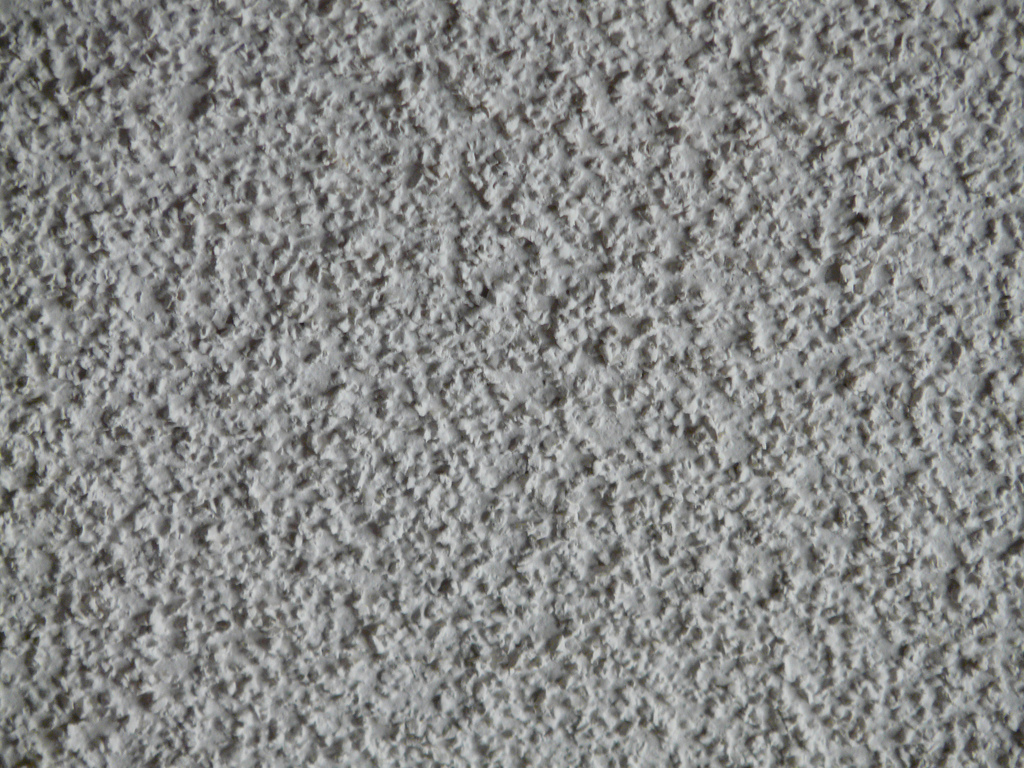
Popcorn Ceilings
A popcorn ceiling (slang), also known as a textured ceiling, cottage cheese ceiling, stipple ceiling, a stucco ceiling or formally an acoustic ceiling, is a ceiling with a certain spray-on or paint-on treatment. It was the standard for bedroom and residential hallway ceilings for its bright, white appearance, ability to hide imperfections, and acoustical characteristics. In comparison, kitchen and living room ceilings would normally be finished in smoother skip-trowel or orange peel texture for their higher durability and ease of cleaning.
In early formulations, it often contained white asbestos fibers. When asbestos was banned in ceiling treatments by the Clean Air Act in the United States, popcorn ceilings fell out of favor in much of the country. However, in order to minimize economic hardship to suppliers and installers, existing inventories of asbestos-bearing texturing materials were exempt from the ban, so it is possible to find asbestos in popcorn ceilings that were applied through the 1980s. After the ban, popcorn ceiling materials were created using a paper-based or Styrofoam product to create the texture, rather than asbestos. Textured ceilings remain common in residential construction in the United States.
Since the mid-2000s, the popularity for textured popcorn ceilings has diminished significantly across North America. A movement towards more modern, clean lined design features has influenced home improvement professionals to provide popcorn ceiling removal services. This feature has a multitude of benefits over the textured ceiling, such as its association with a high-end aesthetic, it multiplies natural light throughout the space, it does not harbor dust and allergens (only to be re-introduced into the air), easier patching and touching up after a drywall repair, etc. The process can be difficult to execute for the average do-it-yourself home owner, as it requires skim-coating techniques often only mastered by experienced plasterers. Several coats should be administered to achieve a level smooth surface ready to be sealed and painted. The final cost is usually quite high, thus being less favorable to new construction builders, and sourced by homeowners looking to add value to their properties.
Categorised in: DIY
This post was written by admin
